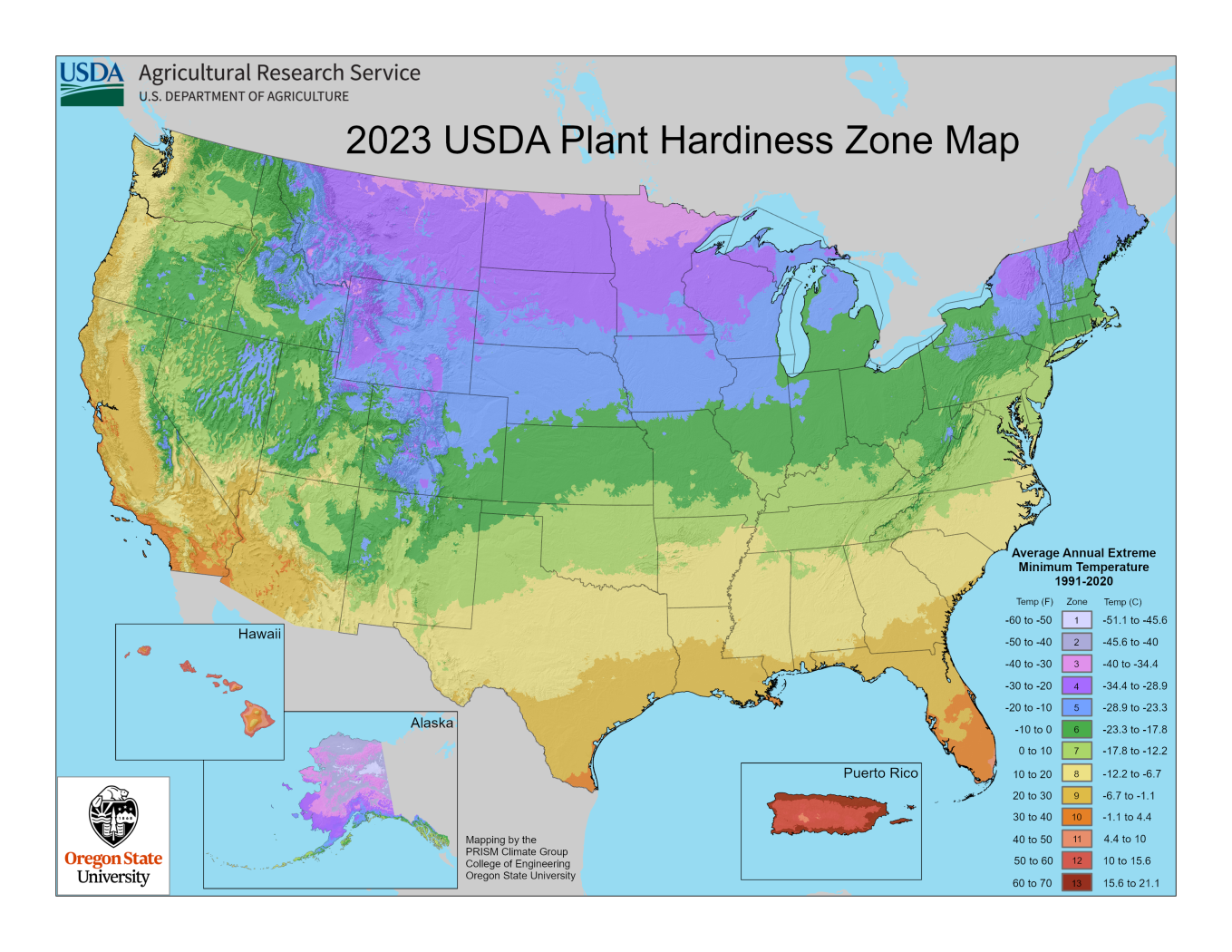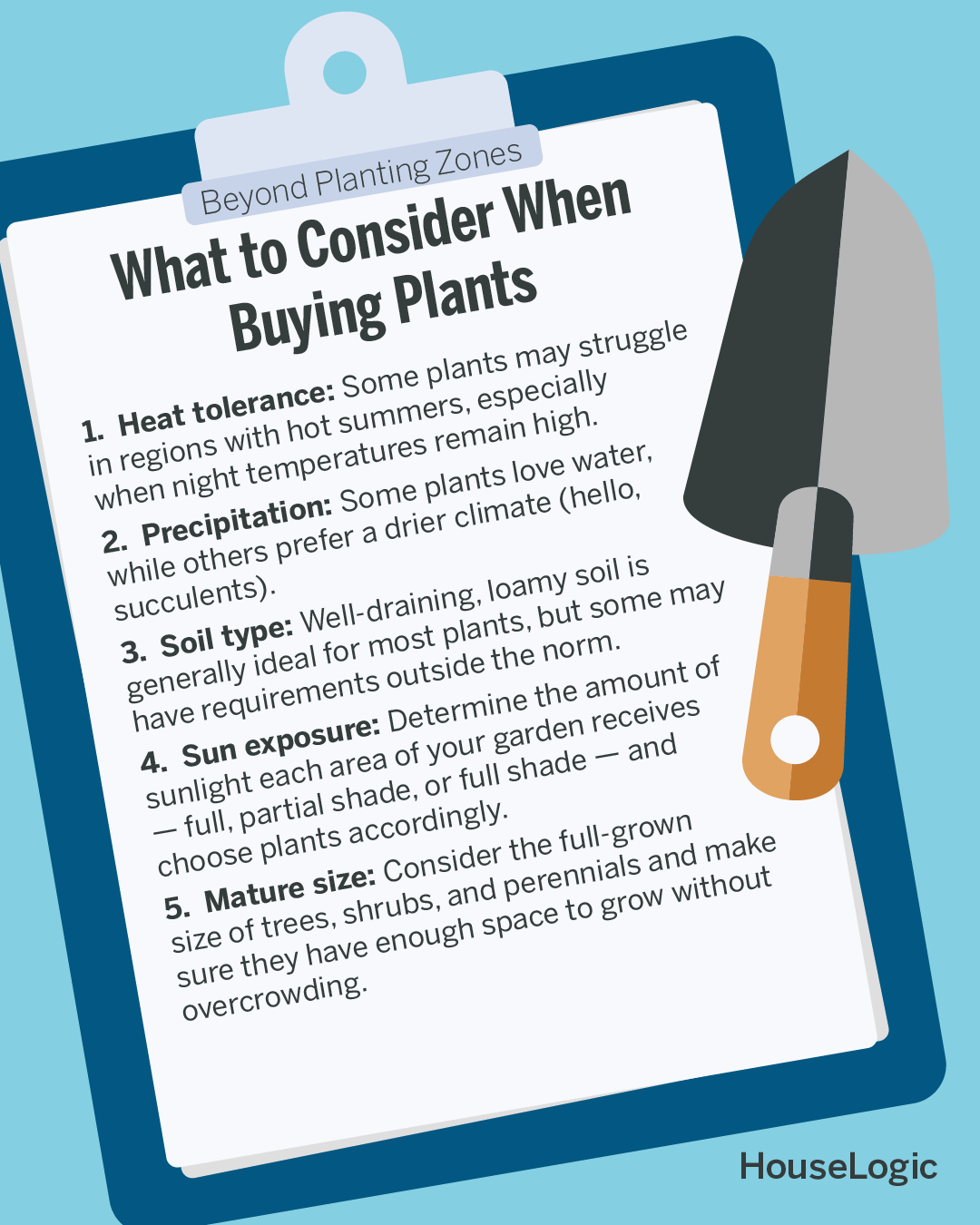Planting season is in full swing, which means many homeowners have landscaping and gardening on the brain. The plant options at your big box store can seem endless, and the local nurseries are chock full of even more options. If you’re a new homeowner or a new gardener, or envisioning a backyard refresh, where should you start? The answer is to home in on your planting zone. It's one of the key components to help your outdoor plants thrive. Let’s dig into the basics.
Doing the Groundwork for Planting Zones: Learning Garden Lingo
Before we figure out which outdoor plants are in your planting, or hardiness, zone, some plant-specific vocab will help you learn the lay of the land – and what goes into it.
- Annuals: Also known as seasonal plants. They’re short-term, flowering, or fun options you enjoy for one season or one year.
- Compost: A nutrient-rich mixture of broken-down organic items. For example, it can include banana peels, avocado skins, or old lettuce leaves that have been sitting in the fridge a couple days too long. They can be mixed with soils and act as a fertilizer in gardens.
- Edible plants: These are herbs, veggies, fruit, or even flowers, which can do double duty by being both pretty and edible. Examples include pansies, nasturtium, and borage, or starflower. Before you start tossing them into a salad, though, make sure you know your flowers. Some varieties can be poisonous.
- Heirloom plants: A cultivated variety, or “cultivar,” of a plant that’s grown in a community or region. It’s typically edible. These would be heirloom tomatoes or heritage fruits.
- Native plants: Think natural. They are plant species that have “occurred naturally in a particular region, ecosystem, or habitat, without human introduction,” according to the National Wildlife Federation.
- Perennials: They have a lifespan of more than two years. Since perennials will be with you longer, choose them carefully.
- Pollinators: Examples are bees, butterflies, beetles, hummingbirds, and even bats. They move pollen from one plant to the next, which fertilizes plants and encourages growth.
- Pruning: This involves removing certain parts of plants — stems, buds and sometimes roots — to help encourage healthy growth. There’s no one-size-fits-all approach to pruning, though. Each plant requires a different method, so make sure to consult an expert.
- Shrub: A perennial woody plant that's smaller than a tree and may or may not flower. It’s a “multistem woody plant that is less than 15 feet tall,” according to the Virginia Cooperative Extension office at Virginia Tech. Shrubs have no dominant stems.
Plant Hardiness Zone Map: A Guide for Your Garden

How well a plant thrives in your garden depends on a number of factors — for example, sun exposure, watering, and maintenance. But its planting zone, also known as a growing zone or hardiness zone, is a key factor. Plants simply do better in certain areas because of the climate.
Enter the USDA Plant Hardiness Zone Map, also known as a gardener’s best friend. “Hardiness zones are most relevant for perennial plants, trees, and shrubs that need to survive winter to return each year,” says Gerardo Loayza, founder and CEO of BACQYARD, an online landscape design company. Essentially, anything you want to last for the long term will do best if it’s in your area’s planting zone.
The map is broken out into 13 zones, with Zone 1 representing the coldest climate and Zone 13, the warmest. “Each zone represents a 10-degree Fahrenheit different in average minimum temperature,” Loayza continues. “By selecting plants that are well-suited to their zone, gardeners can ensure better plant survival and performance.”
You may wonder how accurate the map is. It was updated in 2023 for the first time since 2012, and it's more accurate and detailed than the previous version, according to the U.S. Department of Agriculture. One reason is that the current map includes temperature data from more than 13,000 weather stations compared to just under 8,000 weather stations used to create the last map. Many areas of the map showed a shift to warmer zones, according to the website Gardening Know How. In fact, the latest version shows an overall increase in average temperatures of 2.5 degrees.
How to Pick Plants for Your Hardiness Zone
You’re at your local nursery or big box store and you know you want to start with outdoor plants in your zone. You know what that is because you’ve consulted the plant hardiness zone map. You might assume all plants at your local garden center are good to go for your area.
While that’s generally true, “it’s still advisable to check the specific zone requirements,” says Jana McDaniel, a farmer founder of First Saturday Lime, which produces an eco-friendly, antimicrobial protectant for gardens. “Some stores may carry a wider selection that includes plants better suited for warmer or cooler regions,” she adds.
Before you start putting plants in your cart, check the plant’s tag or sticker. “Zone information should be available for perennials, shrubs, and trees,” says Gail Pabst, a horticulturist and national marketing director for the National Garden Bureau, based in Downers Grove, Ill.
If you find a plant you love, but it isn’t labeled with a growing zone, ask a knowledgeable gardener or attendant for help. It could just be that the plant is an annual or edible variety. It’s also likely that a plant sold in a local nursery might fare well in a microclimate in your yard.
How to Supplement Planting Zones With Microclimates
Within all planting zones are small pockets that vary from that zone’s designated degree variation. These are called microclimates, and they result from several factors including elevation, proximity to bodies of water, and urban heat island effects, says McDaniel. “Homeowners should consider microclimates, as they may allow for growing plants outside the typical zone range,” she adds.
Microclimates are often found in yards and allow you to try out plants that aren’t necessarily in your planting zones. “A sheltered courtyard may support plants typically associated with a warmer zone, while a low-lying area that collects cold air may be suitable for plants in a cooler zone,” says Loayza.
Is It OK to Push Outside the Planting Zone?
Let’s say you’ve happened across a plant at the local nursery around the corner that you absolutely love. You want it; you gotta have it; but it’s outside your zone. Not to worry. You can try zone pushing, which is attempting to grow plants in your yard or garden that shouldn't survive in your climate based on your hardiness zone.
You have a couple of options in experimenting with zone pushing. “For perennials, shrubs, and trees that aren’t hardy in your zone, simply enjoy them as annuals,” suggests Pabst. “If you’re looking to add plants that are just slightly outside your zone, take advantage of your garden’s microclimates.”
What to Consider Beyond Planting Zones
Planting zones are important, but so are other factors when it comes to helping your plants thrive. McDaniel notes that wind patterns, pruning requirements, and fertilizer needs all make a difference in a plant’s ability to thrive.

Loayza offers five more considerations:
- Heat tolerance: Some plants may struggle in regions with hot summers, especially when night temperatures remain high.
- Precipitation: Some plants love water, while others prefer a drier climate (hello, succulents).
- Soil type: Well-draining, loamy soil is generally ideal for most plants, but some may have requirements outside the norm.
- Sun exposure: Determine the amount of sunlight each area of your garden receives — full, partial shade, or full shade — and choose plants accordingly.
- Mature size: Consider the full-grown size of trees, shrubs, and perennials and make sure they have enough space to grow without overcrowding.
Your garden should be a source of joy and beauty. Loayza imparts this advice to help you get there: “Choose plants that appeal to your aesthetic preferences and serve the desired purpose, whether it’s providing colorful blooms, attracting pollinators, or creating a relaxing atmosphere.”
